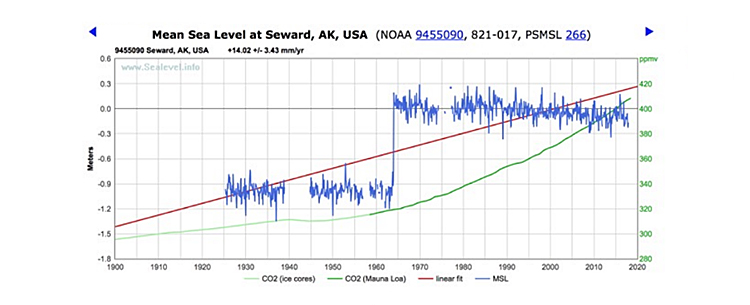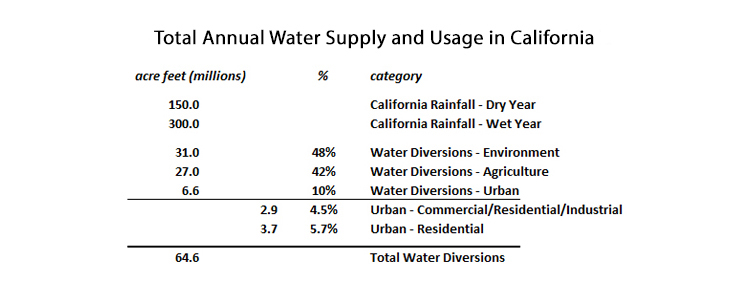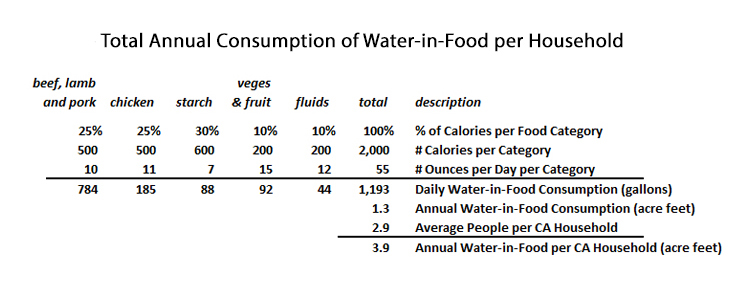Mega Cities Require Mega Suburbs
Housing is unaffordable in California, and, increasingly, housing is becoming unaffordable in every other part of the United States where Democrats control state legislatures and city councils. And in the spirit of nonpartisanship, it is fair to say that when it comes to housing, far too many Republicans share the same agenda and goals as their supposed Democrat opponents.
The shame of these policies is not only the misery they impose on growing proportions of Americans, but the pessimism they represent. Read beyond the initial recitation of mundane obstacles to share a positive vision of the future. The economics of affordable housing do not have to be complicated. Awesome housing for everyone can be realized merely by changing the conventional wisdom.
Here are four policy choices that have turned millions of Americans into slaves to their home mortgages, and pushed additional millions into cheap rentals that cost them most of their paycheck.
1 – Punitively high fees for building permits. These exorbitant sums are necessary to pay for infrastructure such as connector roads and utility conduits that cities used to pay for out of their operating budgets. But out-of-control expansion of government combined with overmarket pay negotiated by government unions has changed all that. Now local governments have to charge developer fees that can easily exceed $100,000 per home.
2 – Laws that require “inclusive zoning,” whereby low income people are given subsidized homes and apartments in high-income neighborhoods. This pushes up the costs for housing that people have to actually pay for without relying on government handouts.
3 – Endless litigation by environmentalist attorneys bent on collecting settlements for themselves and their organizations, as well as environmental litigation used by labor unions as leverage to force developers to use union labor.
4 – The policies of “urban containment,” whereby for environmental reasons, vast expanses of land that could be used for new homes are off limits to developers.
While the first three on this list are quite enough to push home prices up, it is the fourth that delivers the fatal blow to any hope of changing the equation and making homes affordable again. This one truism, that housing must be dense and packed within existing cities, is the conventional wisdom that has destroyed affordable housing and corrupted a generation of policymakers. It must be shattered.
Only when cities can build out as well as up can there be less expensive construction costs and lower land costs. And this policy, supposedly required to save the planetary environment, is based on two fundamentally flawed premises.
Urban Containment is 21st Century Green Apartheid
The first false premise is the density delusion, the idea that we are running out of land. In nearly every region on earth, this is false. In California, the urban footprint only consumes 8,200 square miles, barely 5 percent of the total land in the state. If you put ten million people into new homes on quarter acre lots, four per home, with an equivalent area set aside for new roads and new commercial and industrial use, you wouldn’t even consume an additional 2,000 square miles! California’s cattle ranches consume over 25,000 square miles. There’s plenty of room.
In the rest of the United States, the same surprising statistics apply. The lower 48 states in the U.S. are less than 4 percent urbanized. Even worldwide, there is plenty of available land. If you put ten billion people into new homes on quarter acre lots, four per home, with an equivalent area set aside for new roads and new commercial and industrial use, you would only consume 3.8 percent of all land excluding Antarctica. Most estimates of urbanization currently worldwide are around 2.7 percent. Allowing suburban dispersion of global population is very unlikely to require even 3.8 percent of available land. Not only will many people prefer to live in the high density urban cores, but breakthroughs in indoor agriculture and aquaculture, along with ongoing improvements in crop yields, will likely allow global reserves of farmland to shrink at a faster rate than mega suburbs expand.
The other false premise used to justify urban containment is that more single family homes means more “sprawl,” which will mean more “vehicle miles traveled,” which will contribute more “greenhouse gasses” to the atmosphere, leading to catastrophic “climate change.”
With apologies for the sarcasm quotes, and as Sleepy Joe Biden would say, “but here’s the deal, folks:” You can believe that greenhouse gas is a planet killer all you like, but building entire new low density cities will not cause an appreciable increase in greenhouse gas emissions. The studies that make this claim are biased, ignore crucial variables, and make no allowances for dazzling new technologies. Zero emission vehicles are just the beginning.
What we can barely imagine today will become passe by the middle of this century. For starters, the advancing world of virtual workforces, which just took a quantum leap forward during the pandemic lockdown, will become the rule rather than the exception. And the jobs that require physical presence will increasingly be jobs that are by their nature dispersed to where the people are – schools, restaurants, services, trades.
By the late 21st century, and contrary to Malthusian fearmongering, magnificent mega cities will be vital and evolving. Building materials will be more abundant than ever, with concrete harvested from desalinated ocean brine, and precious minerals arriving from mining the asteroid belt. With fusion power finally perfected, energy will cheap and inexhaustible. And connecting the mega cities to the mega suburbs will be not only next generation roads, but air lanes filled with passenger drones.
What motivates opponents of the single family dwelling – apart from their misanthropy, greed, and blinkered fanaticism – is a poverty of the imagination. Many future suburbs will be disbursed in areas inaccessible by road, with only flying vehicles providing access. Modular homes with almost no footprint, custom designed and mass manufactured at affordable prices, will be air dropped into place, sparing most of the required on-site construction. Other suburbs, more contiguous with major cities, will have the required connector roads and residential streets, but these roads will be fewer and smaller, since many residents will telecommute, and others will travel by air.
Space Travel, Spin-off Technology
Back in the 1960s, when the U.S. was in a desperate rush to beat the Soviets to the moon, dissident Americans bemoaned the fact that we were spending billions to conquer space while there were still people living in poverty back down here on earth. Gil Scott-Heron, an artist of unimpeachable integrity, but more than a little bitterness, wrote the classic “Whitey On the Moon.”
With respect, Gil Scott-Heron was wrong. Everyone benefited from the moon landing. The American space program of the 1960s paved the way for everything from semi-conductors to integrated circuits, dramatic advances in rocketry, breakthroughs in civil, electrical, aeronautical and engineering science, complex software, durable and lightweight composite materials, and, for a few specifics—everything from CT scanners to liquid-cooled garments to freeze-dried food.
Maybe an overt cold war with China can’t come soon enough. A new space race could channel some of this six trillion dollars of suddenly manufactured money into building a permanent base on the south pole of the moon, to use as a jumping off point for asteroid mining. And it isn’t just abundant minerals that will result from the industrialization of the solar system. The spin-offs will be more sophisticated systems than ever to process and recycle air, water and waste, manage energy, and grow food. Imagine how these space technologies will translate into self contained and inexpensive, low footprint modular homes that can offer residential comfort anywhere on earth.
We have no idea today how many transformative innovations will come from a revitalized space program, but if the legacy of the 1960s is any indication, they will be miraculous.
Any examination of how cities and suburbs will look or should look on this planet one-hundred years from now must take into account these promising trends. Global population is leveling off. Science and technology is advancing at an increasing rate, and every year it offers new breakthroughs, solutions and cures. An optimist would look at the last several decades and conclude, despite the challenges, humanity is on a relentless march towards a better quality of life for everyone. An article published by the BBC last year lists several reasons “why the world is improving,” including rising life expectancy, falling infant mortality, falling rates of fertility, ongoing GDP growth, less income inequality, the spread of democracy, and fewer armed conflicts.
This argument for what Wired once called the “Long Boom” is embodied in the philosophy of “New Optimism,” with its principal proponent the Danish economist Bjorn Lomborg. According to Lomborg, “air and water are getting cleaner, endangered species and forests are holding their own, and the risks associated with global warming are exaggerated.” He contends that “more people than ever before, living in all parts of the globe, are becoming healthier, richer, and better educated; that the human race is living longer and more peaceably; that we’re considerably freer to pursue our happiness.”
As we await permission to venture outside our dwellings once again – or, for that matter, as we defiantly venture outside before they issue the all-clear – we have an opportunity to reflect on the many types of confinement we must overcome. Confinement to our homes. Confinement within politically contrived barriers around our cities, Green Bantustans, where our lives are needlessly dangerous and expensive. Confinement on this world, when treasures await in the most mega of the mega suburbs, the Habitable Zone, all around the sun.
The worst possible move that human societies can make is to panic now, as our species stands on the cusp of more options, more enlightenment, more freedom and prosperity than ever before.
This article originally appeared on the website American Greatness.
* * *

Edward Ring is a contributing editor and senior fellow with the California Policy Center, which he co-founded in 2013 and served as its first president. He is also a senior fellow with the Center for American Greatness, and a regular contributor to the California Globe. His work has appeared in the Los Angeles Times, the Wall Street Journal, the Economist, Forbes, and other media outlets.
To help support more content and policy analysis like this, please click here.






